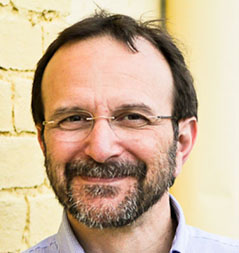Michele speaks with members of the Department of Bacteriology at the University of Wisconsin – Madison, on the occasion of its designation as a Milestones in Microbiology site, where they discuss how the department has advanced the science and teaching of microbiology.
Vincent, Elio, and Michael explore the fossilization of archaeal lipids, and highlight the recent ICAAC in Washington, D.C.
In Melbourne, Australia Vincent speaks with David, Melanie, and Adam about their work on group A Streptococcus, Helicobacter pylori, and infections of Koalas with Chlamydia.
Vincent, Michael, Elio and Michele review a new fluorogenic diagnostic test for tuberculosis bacteria, and the role of a metalloprotease in helping a fungus invade the central nervous system.
Vincent, Michael, Elio and Michele discuss how an endosymbiont betrays its aphid host to alert plant defenses, and a new immunosuppressive cell that allows infection of neonates.
Vincent, Michael, and Michele discuss how iron might disperse bacterial biofilms in carotid arterial plaques, and controlling Salmonella by modulating host iron homeostasis.
Vincent, Michael, and Michele review highlights of the 2014 General Meeting of the American Society for Microbiology in Boston, MA.
Vincent, Elio, Michael, and Michelle review how a pathogen promotes plant attractiveness to insect vectors, and activation of sensory neurons that modulate pain and inflammation by bacterial infection.
Vincent, Elio, Michael, and Michelle discuss the use of bacteria to build a genetic sensor for heavy metals, and how host sugars help enteric pathogens to expand after antibiotic treatment.
Vincent, Elio, Michael, and Michelle discuss a symbiosis between a bacterium and fungus that increases the virulence of oral biofilms, and the assembly of amyloid fibers, which are needed for biofilm formation.




